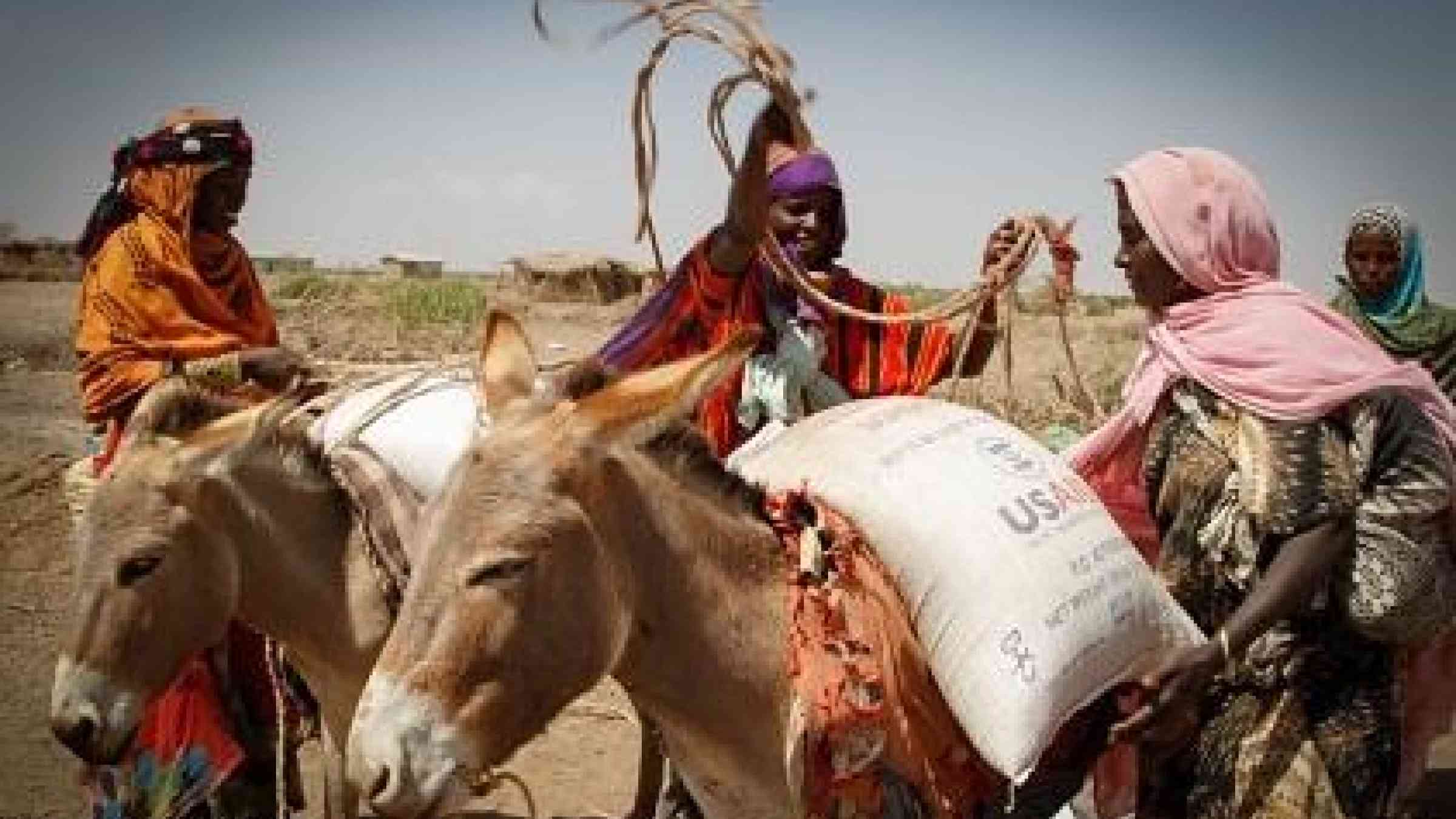El Nino impacts underscore need for preparedness

More needs to be done to build resilience in communities affected by the strongest El Nino in five decades, experts say (Photo: WFP/Michael Tewelde)
GENEVA, 27 April 2016 – The world needs to do more to tackle the drawn-out impacts of the strongest El Nino in five decades, senior aid and development officials say, underscoring the call for preparedness and resilience in the Sendai Framework for Disaster Risk Reduction.
With the current El Nino sparking extreme weather across the globe, an estimated 60 million people have been affected, including some of the most vulnerable in East and Southern Africa, Southeast Asia, Central and South America and the Pacific.
“We’re sounding the alarm about the genuinely disastrous impact of El Nino on human life and well-being,” said the UN Emergency Relief Coordinator Mr. Stephen O’Brien. “The human consequences of El Nino are all too real,” he added.
Characterized by a warming of the Eastern Pacific, the climate phenomenon has a range of impacts such as flooding in South America and drought in the Asia-Pacific region and Africa – hard-hit Ethiopia is the “ground zero of El Nino”, according to Mr. Wolfgang Jamann, Secretary General and CEO of aid organization Care International.
“Sixty million people is more than the combined number affected by all disasters over the past six years,” Mr. Jamann underlined. “We’re at a tipping point,” he said.
Even when it subsides, as it currently the case, an El Nino’s impacts linger, for example by raising the risk of poor harvests and consequently of malnutrition, as well as creating a fertile environment for water-borne diseases and mosquito-spread viruses such as malaria and Zika.
“Recovery from El Nino takes years,” said Mr. O’Brien.
Over the past months, governments, the UN and aid groups have been stepping up El Nino-related preparedness and response plans to try to stem the impacts. Overall, they are seeking some US$3.6 billion to meet critical needs for food and agricultural support, as well as nutrition, health and emergency water and sanitation needs. But the funding gap is currently more than US$2.2 billion.
“We have weeks, or months, to get this right,” said Mr. O’Brien.
The current outlook is even bleaker given fears that the El Nino’s counterpoint, a La Nina, could strike at the end of the year. Typically, that brings floods to drought-affected communities in Africa and raises the intensity of tropical cyclones in the Asia-Pacific region.
Both an El Nino and La Nina disrupt commodities markets, affecting food prices and thus compounding the impacts on already hard-pressed populations.
In addition, the current El Nino has gone hand in hand with record temperatures and other climate-change impacts that are causing hazards such as storms to become increasingly frequent and intense.
“We need to prepare for future shocks caused by El Nino and La Nina,” said Ms. Izumi Nakamitsu, Assistant Administrator of the UN Development Programme.
Despite a gradual shift by the international community over the past two decades from treating disasters purely as a matter humanitarian relief to an approach that seeks to confront risk head on and thus avoid a crisis, aid spending for preparedness has lagged behind.
Ms. Nakamitsu noted that between 1991 and 2010, just 40 cents of every US$100 in international aid was spent on preparedness and disaster risk reduction. That was despite the fact that studies show every dollar spent on reducing risk means a saving of between four and seven dollars on relief efforts.
“We feel that this balance has to shift. It’s much cheaper to invest in preparedness and disaster risk reduction than in response,” said Ms. Nakamitsu.
Mr. Jamann echoed that, noting that failing to stem El Nino-related malnutrition now would mean having to spend three times more in the long run.
Increasing global preparedness is a core goal of the Sendai Framework, which was adopted by the international community in March last year.
Its seven targets include substantial reductions by 2030 in disaster deaths, the number of affected people and economic losses, damage to critical infrastructure and disruption to basic services such as health and educational facilities. It also seeks to increase by 2020 the number of countries with national and local risk reduction strategies, bolster the capacity of developing countries, and vastly increase coverage by early warning systems.
Explore further
Also featured on
Is this page useful?
Yes No Report an issue on this pageThank you. If you have 2 minutes, we would benefit from additional feedback (link opens in a new window).